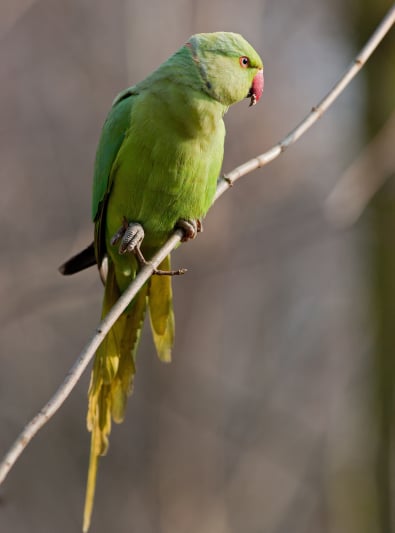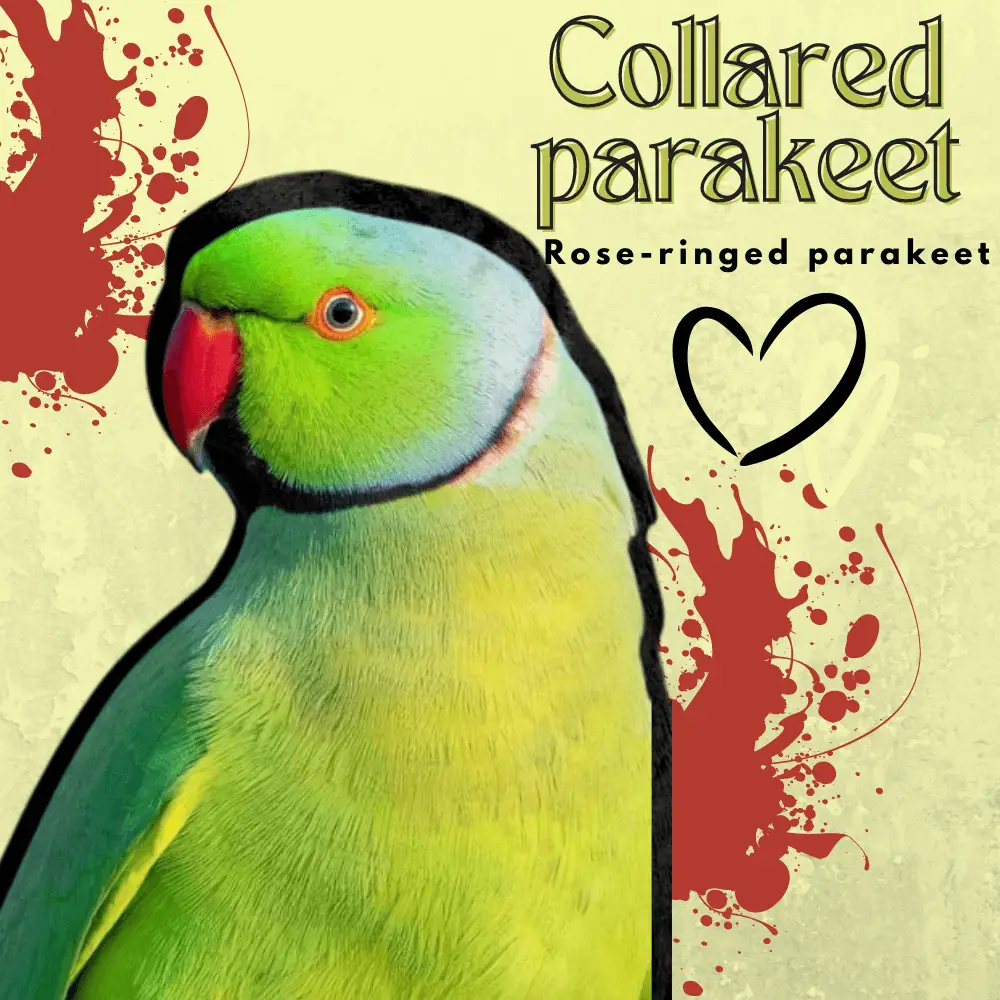Collared parakeet or Rose-ringed parakeet Psittacidae can live 30 years on average, the Ring-necked Parakeet is recognizable by its beautiful green plumage,

| Family | Psittacidae |
|---|---|
| Kind | Psittacula |
| Weight | 117 gr |
| rose ringed parakeet size | From 40 cm to 41 cm |
| Life expectancy | 30 years The average life expectancy of the Ring-necked Parakeet is around 30 years. |
|---|
Rose-ringed parakeet habitat
The Ring-necked Parakeet is native to Africa and Asia, populating tree savannas and tropical crop areas.
Many birds of this species have been introduced in Europe and around the world, and some have been found in the wild by escaping or the following abandonment.
They are therefore found today quite commonly in France, Italy, Great Britain or even in Belgium, especially in parks.
The Ring-necked Parakeet has adapted so well to these environments that it is not considered threatened today.
History of the breed
The description of the Ring-necked Parakeet was made by the Italian-Austrian naturalist Giovanni Antonio Scopoli in 1769.
The scientific name he assigned to the species, Psittacula krameri in this case, refers to the German naturalist Wilhelm Heinrich Kramer.
Physical features
With a wingspan of 47 cm, the Parakeet is characterized by a plumage whose dominant color is green.
This bird has a long tail with beautiful shades of blue. Of yellowish tones are on the abdomen and the underside of the wings.
From the base of the beak to the eyes, there is a black line. The beak is two-colored; the upper mandible is red, and the lower one is black.
The necklace that is referred to in its name is observable in the male. It is black and associated with a red band on the nape. Young birds under 3 years of age and females do not have this attribute.
In captivity, a multitude of mutations exists lutino, turquoise, albino, cinnamon, lacewing, buttercup…
Behavior and character
In the wild, Parakeets are large groups that spend their nights on trees and only leave them in the morning to look for food.
The Ring-necked Parakeet utters a very particular cry, called whistling or chattering.
In captivity, it is a fairly simple bird to breed. Reputed less demonstrative than other species of parakeets, the one with a collar remains quite affectionate and playful. She also needs to be stimulated by games and interactions.
The majority of the Ring-necked Parakeets these days belong to the subspecies P. k. manillensis, rarely Pk borealis and P. k. krameri.
Funny Rose ringed parakeet
SOURCE: Gadi Eidelheit
What do rose ringed parakeets eat
The Ring-necked Parakeet feeds on a very wide variety of plants. These range from seeds to shoots, including greenery, cereals (rice, quinoa …), flowers and many fruits (berries), and oilseeds (almonds, nuts …).
Ringneck parakeet Food
SOURCE: WildFilmsIndia
Reproduction
In the Ring-necked Parakeet, the breeding period begins in March or April and ends in the fall, when it is in the wild.
The female usually lays between 2 and 6 eggs at a time, which she incubates for 21 days. The chicks are fed until they reach the age of 40 days.
Rose ringed parakeet male
SOURCE: indiavideodotorg
Health
Rather robust bird, the Parakeet is nevertheless likely to suffer from some diseases.
These are mainly chlamydia and Pacheco disease, the latter being associated with a herpes virus and which can, in certain cases, give rise to serious liver damage.
Way of life
The ideal for breeding Ring-necked Parakeets is to devote a spacious aviary to them, rather than a simple cage.
It can also be placed outside, provided that a shelter is provided to provide effective protection against the weather.
Inside, and in addition to the essential feeders and drinkers to fill and clean daily, it is essential to have accessories allowing the Ring-necked Parakeets to play, occupy, and to exercise: perches, branches, etc.
Ringneck parakeet price
Rose-ringed parakeet price
The Ringneck Indian Parakeets’ cost can range anywhere from $260 to as much as $1,300


